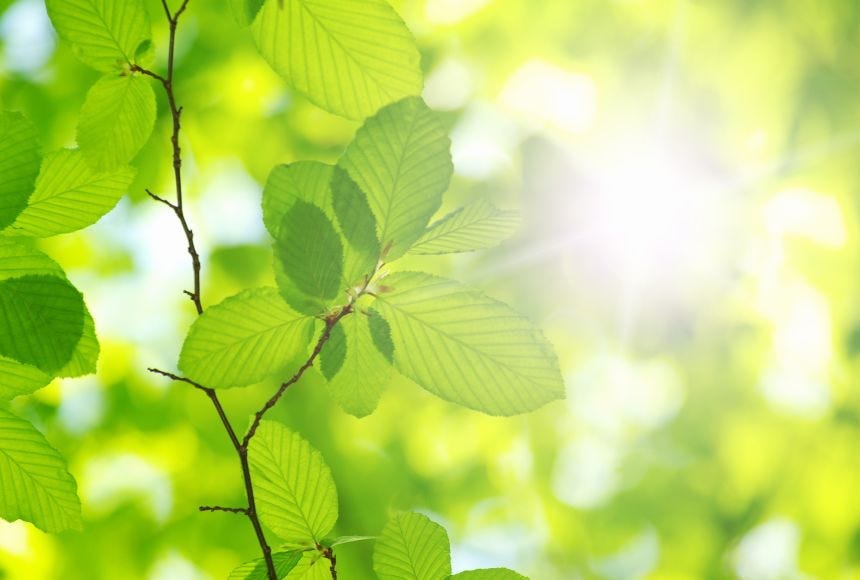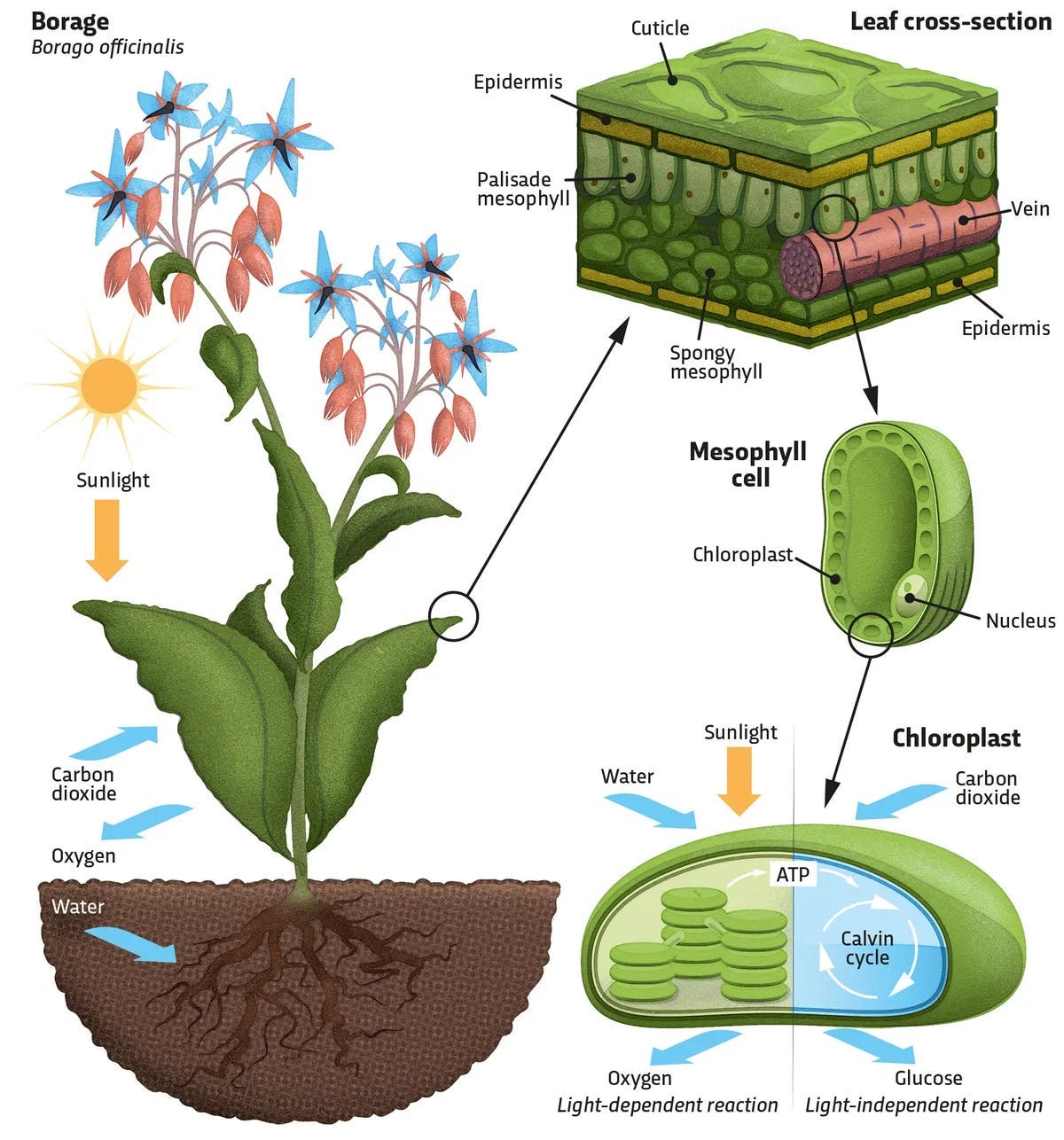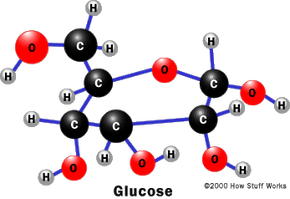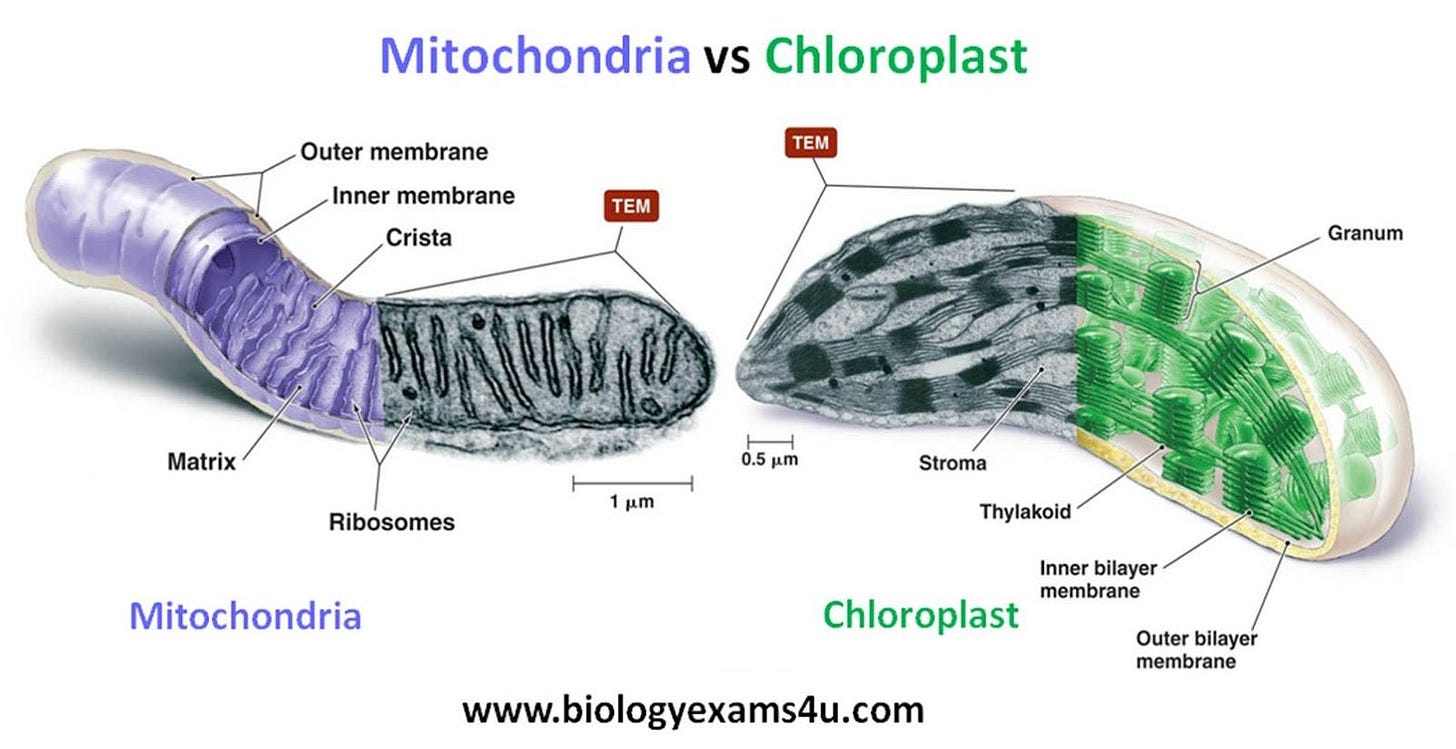How Energy Drives The Production of Essential Molecules in Living Organisms
All life forms on Earth ultimately depend on energy from the sun to survive and thrive
A photon hits a leaf and is absorbed by chlorophyll, exciting electrons in the chlorophyll and sending them through the electron transport chain (E.T.C.) which leads to the synthesis of ATP as well as another energy-carrying molecule called NADPH. Meanwhile, the flow of electrons through the E.T.C. splits water molecules into molecules of oxygen, protons, and electrons → a process called photolysis. While the oxygen is released as a byproduct, the protons and electrons will be used later in the process.
Next, during the Calvin Cycle, carbon dioxide from the atmosphere is fixed into a stable organic molecule → facilitated by the essential enzyme Rubisco. This fixed carbon dioxide molecule then leads to the synthesis of glucose and other carbohydrates through a series of reactions fuelled by ATP and NADPH. Thanks to these reactions, the plant now has glucose molecules — the primary source of energy for the plant and the precursor for the synthesis of other organic molecules required by the plant.
This is photosynthesis, the process by which the flow of energy from sunlight through biological systems controls glucose production and consumption in organisms, which thereby regulates the generation of energy by living organisms and drives their activities.
The production of sugar by photosynthetic organisms and then its catabolism in photosynthetic and non-photosynthetic organisms through cellular respiration releases the energy in the chemical bonds of sugar molecules. This energy, as well as the different pieces of the sugar molecules, is converted by cells into an array of simple molecules that are used to build more complex molecules that are essential to life → sugar is converted into simple molecules such as amino acids and nucleotides by cells and thus serves as the primary building material for complex molecules such as proteins and nucleic acids (like DNA and RNA).
The flow of energy through life follows this order: Sunlight → Sugar (Glucose) → ATP → Heat (generated when ATP is consumed through metabolism)
Plants and photosynthetic bacteria (which existed long before plants) are essentially the vanguards of all life on Earth, as we animals and all other non-photosynthetic life forms could only evolve after these photosynthetic organisms produced sugar (primarily 6-carbon glucose) using the energy from sunlight and released oxygen as a byproduct. This has provided us with fuel as well as the oxygen required to burn the fuel and has saved us from the overheating effects of excessive carbon dioxide that has been released into the atmosphere through cellular respiration → when we burn the fuel.
Summary of Main Points:
Energy flows through life in a one-way stream
Tiny packets of light called photons radiate from the sun across space and strike the earth, where that light energy is converted into heat energy → which stirs molecules in air, water, sand, and stone.
Life thrives in this stream of energy from sunlight to heat by diverting part of its flow into structures that can move, grow, and reproduce.
To accomplish this, life uses a process known as photosynthesis to convert the energy in sunlight into energy-rich sugars → the 6-carbon glucose.
The parts and energy obtained from the catabolism of sugar serve as the starting material for building complex molecules essential for life from simpler molecules (ex. amino acids to proteins; nucleotides to nucleic acids such as DNA and RNA).
The sugar produced through photosynthesis can be consumed by photosynthetic organisms themselves as well as the organisms that eat the photosynthetic organisms.
The energy contained within the chemical bonds of sugar is then converted into chemical energy in the form of adenosine triphosphate (ATP) through cellular respiration → ATP powers all living functions from moving to breathing to thinking.
ATP (adenosine triphosphate) is commonly referred to as the “energy currency” of the cell, as it provides readily releasable energy in the bond between the second and third phosphate groups. Cells use the energy stored in ATP by releasing it through converting ATP into ADP (adenosine diphosphate).
Most of any organism’s energy gets consumed through metabolism by either catabolic or anabolic processes.
The energy that doesn’t get consumed through metabolism represents only a small fraction of the energy that has passed through an organism. Most of this unmetabolized energy is stored as chemical bonds inside the body.
The food chain is an inverted pyramid since each successive level (from plants and photosynthetic bacteria/algae to decomposers) extracts only a portion of the energy flowing through it.
The accumulation of carbon dioxide in the atmosphere from life forms and industrial processes prevents heat from escaping the Earth (the greenhouse effect), but plants and other photosynthetic organisms consume that carbon dioxide and prevent non-photosynthetic organisms like us from overheating.
The entire plant and animal world depends on two bacteria-sized organelles within cells to produce sugar and energy → chloroplasts in plant cells manufacture sugar through photosynthesis and mitochondria in animal and plant cells produce ATP — which provides energy for the organism — through cellular respiration by catabolizing sugar.
The sugar-building enzymes in chloroplast require ATP to manufacture sugar, therefore chloroplast can also generate ATP. However, they make sugar because, in addition to providing energy, this essential molecule provides the building material which cells can convert into an array of molecules. With these molecules, they can build more complex molecules — most notably proteins from amino acids and nucleic acids (DNA & RNA) from nucleotides.
Life’s molecules are recycled in a continuous loop: chloroplasts consume CO2 and H2O and use solar energy to convert them into sugar and oxygen (as a byproduct); mitochondria do the opposite by consuming sugar and oxygen to generate ATP to burn as fuel, discarding water and carbon dioxide in the process.
Altogether, photosynthesis and cellular respiration yield a very simple circularity — water and carbon dioxide in, water and carbon dioxide out, consuming food in the form of glucose and producing energy in the form of ATP in the process — from significantly complex processes that occur within the cell.








